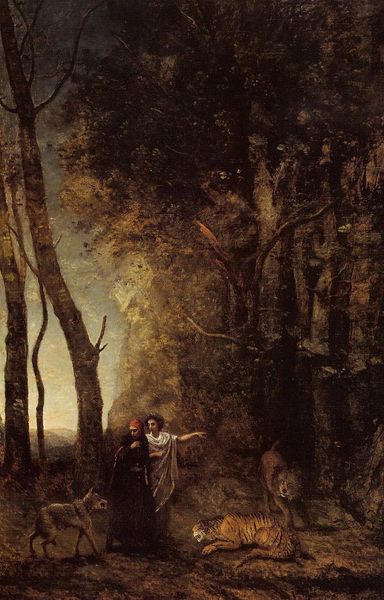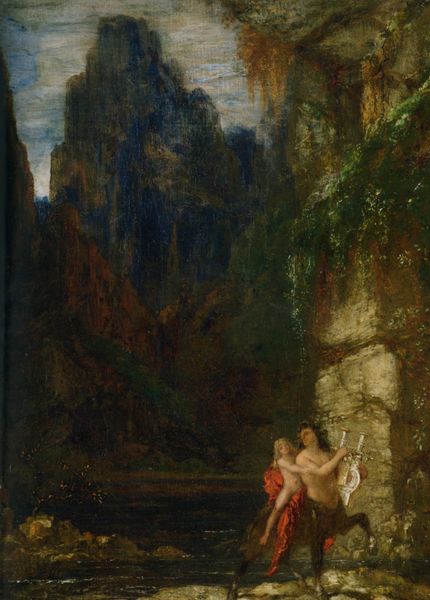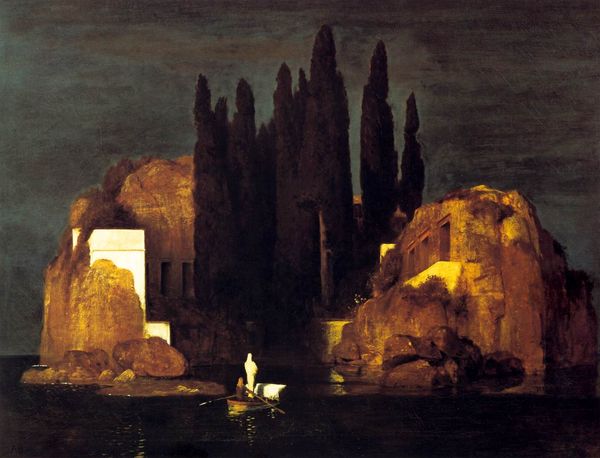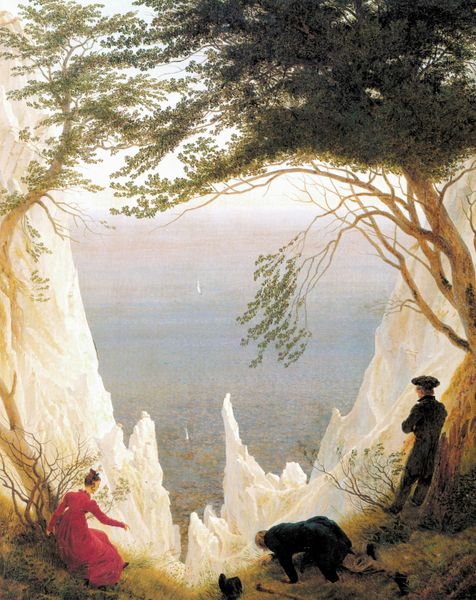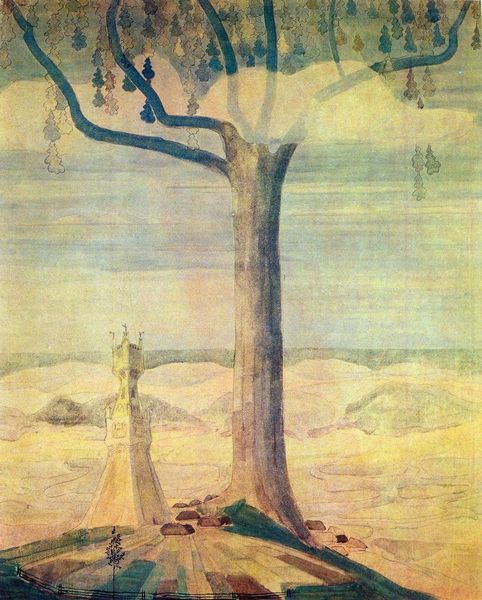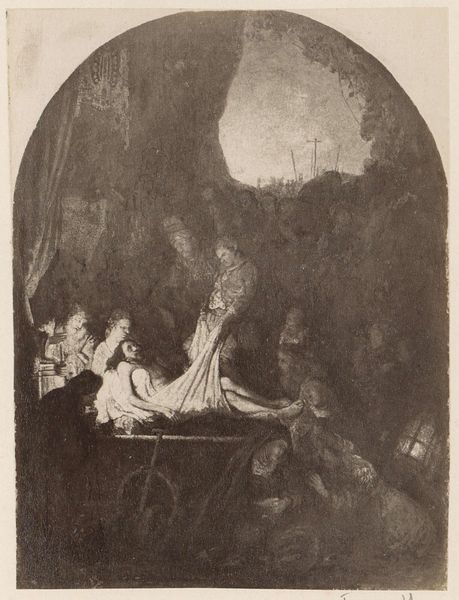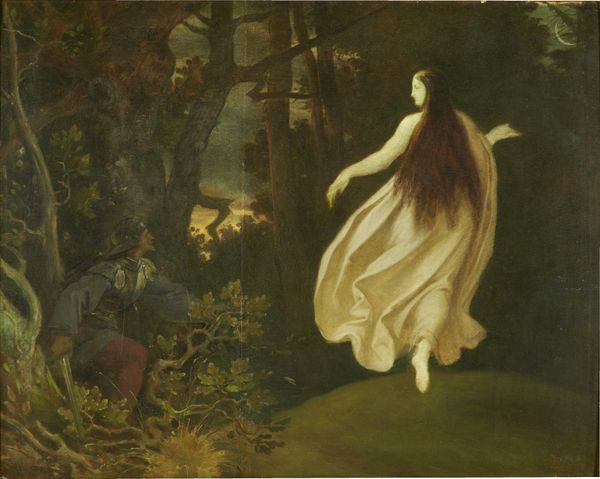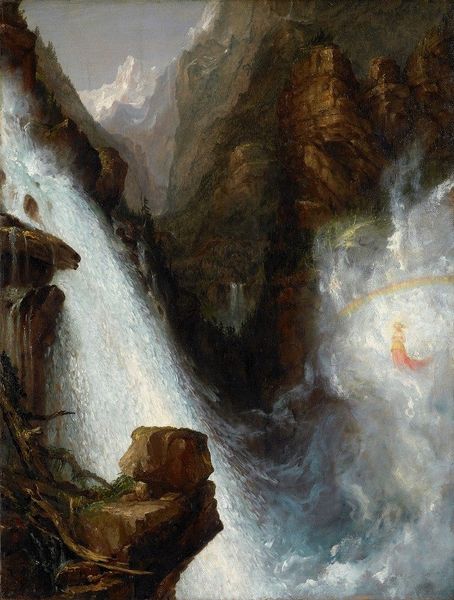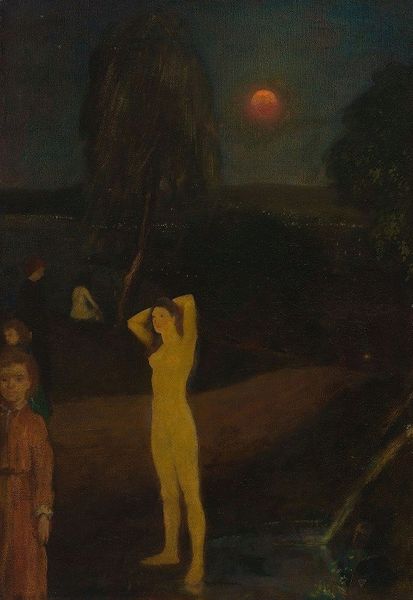
Copyright: Public domain
Editor: This is Tivadar Kosztka Csontvary's "Rendezvous of Lovers," created in 1902 using oil paints. It’s a pretty striking scene, almost dreamlike with that sharp contrast between light and dark. What do you make of it? Curator: Well, immediately I’m drawn to the binaries at play. Look at the duality – the ‘lovers’ framed between that incredibly foreboding darkness on one side and the hopeful sunrise on the other. Considering Csontvary’s biography – his struggles with mental health and his deeply spiritual beliefs – I see this piece as an exploration of inner turmoil, of the constant negotiation between opposing forces within the self and the outer world. The ‘rendezvous’ suggests a meeting, but are these lovers truly connecting, or are they symbols of conflicting ideologies forced into proximity? Editor: That’s a really interesting point. I hadn't considered the potential disconnect between the figures. Do you think the angel figure ties into that spiritual reading as well? Curator: Absolutely. But even here, there's ambiguity. Is it a benevolent guiding force or a passive observer to this fraught encounter? Csontvary’s interest in Romanticism and Symbolism meant he was invested in depicting complex emotional states. We should ask ourselves whose interests were served by these sorts of 'romantic' unions at the turn of the century. Were women, for example, truly autonomous in these relationships? Editor: That is thought-provoking! Looking at it through that lens adds so much more complexity. I appreciate your perspective. Curator: And I yours! By engaging in dialogue, we bring this work back to life!
Comments
No comments
Be the first to comment and join the conversation on the ultimate creative platform.


